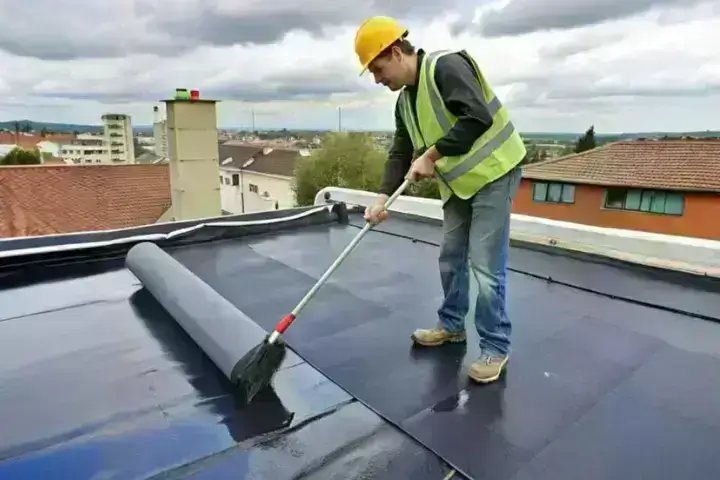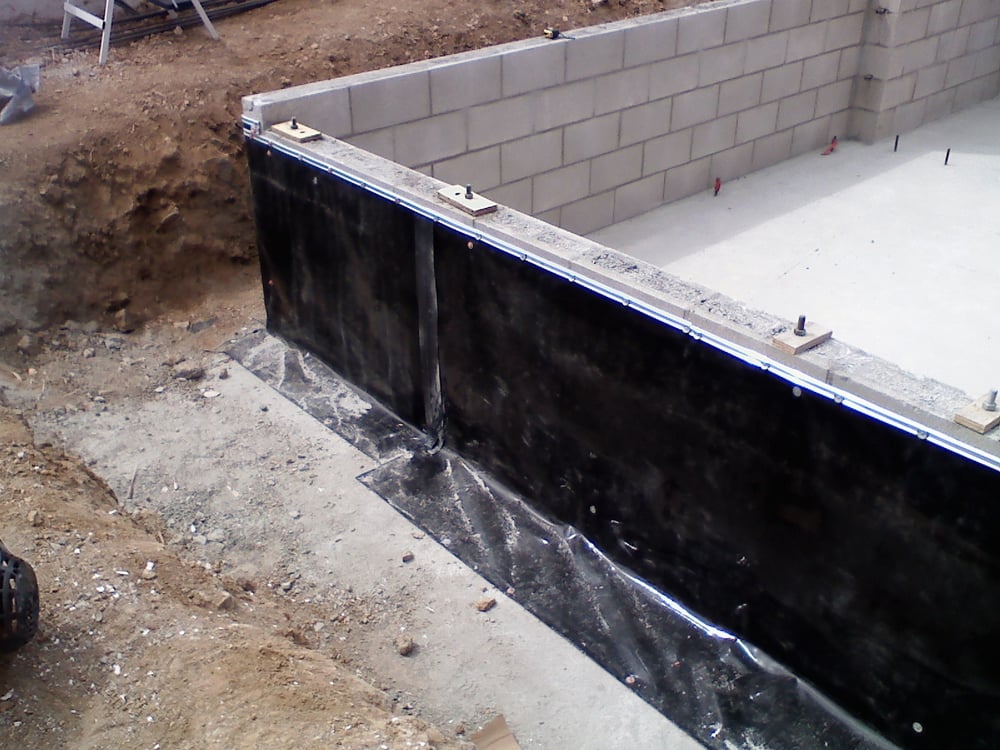Foundation waterproofing Omaha: Is It Necessary?
Wiki Article
How Waterproofing Functions: A Detailed Appearance at Strategies and Technologies
Waterproofing is necessary for safeguarding frameworks from moisture-related damages. It involves numerous strategies and technologies that create obstacles versus water intrusion. Typical techniques, such as compressed clay, coexist with contemporary innovations like liquid-applied membrane layers. Understanding the nuances of these methods is vital for effective application. The efficiency of any kind of waterproofing option pivots not just on the techniques made use of however additionally on continuous maintenance and assessment. What are the essential variables that affect lasting performance?Understanding the Basics of Waterproofing
Waterproofing is an essential process that secures frameworks from water invasion, which can cause significant damage in time. This approach involves the application of various materials and techniques made to create an obstacle against dampness. The key goal is to avoid water from permeating surfaces, which can cause wear and tear, mold and mildew development, and structural instability.Various elements affect the choice of waterproofing method, consisting of the type of framework, its location, and environmental problems. Comprehending the physics of water movement and the properties of different products is important in selecting an effective waterproofing solution.Effective waterproofing not just safeguards buildings however also improves their durability and honesty. Normally, it is integrated right into the layout stage of building to guarantee thorough protection. As awareness of water-related concerns expands, the significance of comprehending waterproofing fundamentals becomes progressively clear to architects, home builders, and homeowner alike.Traditional Waterproofing Techniques
Typical waterproofing methods have actually been made use of for centuries, relying upon reliable methods and products to protect frameworks from water damage. Among the oldest approaches entails making use of clay, which, when compacted, produces an all-natural barrier versus moisture. Additionally, asphalt, a sticky, black product stemmed from petroleum, has actually been used for its water-resistant residential properties, typically used to roofing systems and foundations.Another strategy entails the application of lime-based plasters, which provide a breathable layer that permits dampness to get away while avoiding water access. Thatch roof covering, a traditional method still seen in some societies, uses excellent waterproofing due to its securely loaded straw layers.Moreover, the usage of rock and brick has actually projected, as these materials are inherently resistant to water when effectively installed. Generally, traditional waterproofing approaches stress the significance of picking proper products and building practices to enhance durability against water breach.Modern Waterproofing Technologies
Developments in contemporary waterproofing modern technologies have transformed the method frameworks are shielded from water damage. Innovative methods such as liquid-applied membrane layers and sophisticated sealers have boosted the effectiveness and convenience of waterproofing options. These modern technologies enable seamless application, lowering the danger of leakages and making certain extensive coverage over complex surfaces.Moreover, the combination of clever modern technologies, such as moisture sensing units and automated tracking systems, enables real-time analysis of waterproofing efficiency. This proactive strategy helps with timely maintenance and decreases long-term repair costs.Additionally, innovations in spray-applied finishes use fast application and superb attachment, adjusting to various substrates while offering durable protection. Strategies like polymer-modified systems further enhance adaptability and sturdiness, making them ideal for varied environments. On the whole, modern-day waterproofing modern technologies not just mitigate water breach however also add to the durability and sustainability of structures, noting a significant change in the sector.Materials Utilized in Waterproofing
The efficiency of waterproofing remedies greatly relies upon the materials made use of in their application. Numerous products are used to produce obstacles against water access, each with distinct residential or commercial properties matched for various settings. Frequently used products consist of membrane layers, coverings, and sealants.Liquid-applied membranes, frequently made from polyurethane or acrylic, develop a seamless barrier that adjusts to complicated surfaces. Sheet membranes, typically built from rubber or thermoplastic, deal resilience and are optimal for larger areas. Additionally, cementitious waterproofing materials, composed of cementitious substances, offer exceptional bond and flexibility.Sealants made from silicone or polyurethane are essential for joints and seams, making sure extensive protection. Moreover, innovative materials, such as geo-composite membranes, combine numerous features, improving performance. Generally, the choice of waterproofing products is vital in achieving durable and effective water resistance, tailored to specific project demands and ecological problems.
Typical Applications of Waterproofing
Waterproofing plays a crucial role in numerous fields, ensuring the durability and integrity of frameworks. Common applications include residential solutions that safeguard homes, industrial framework that safeguards companies, and industrial settings that call for robust defense versus dampness. Understanding these applications highlights the relevance of waterproofing in preserving both safety and capability across various atmospheres.Residential Waterproofing Solutions
Numerous property owners face obstacles with moisture intrusion, making reliable property waterproofing remedies vital. Various approaches exist to resolve this concern, consisting of interior and outside waterproofing systems. Inside services typically involve the application of sealers and coatings to cellar walls, which help avoid water seepage. Exterior approaches commonly include the installment of water drainage systems and water-proof membranes that divert water away from the foundation.Additionally, home owners might take into consideration sump pumps to remove water build-up and dehumidifiers to control humidity degrees. underground water tank waterproofing Appropriate grading and using rain gutters also play an essential duty in handling water flow around the home. By executing these techniques, house owners can substantially decrease the threat of water damage and mold and mildew development, guaranteeing a dry and secure living setting.
Commercial Framework Defense
Effective waterproofing services play a vital role in the defense of commercial infrastructure. Water Solutions. These strategies are important for protecting buildings, car park frameworks, and bridges from water damage, which can jeopardize structural honesty and lead to pricey repairs. Typical applications include the installation of membranes, layers, and sealers that develop barriers versus wetness seepage. Locations such as basements, roofing systems, and exterior walls are typically prioritized to guarantee durability and sturdiness. In addition, waterproofing systems can boost power effectiveness by avoiding water-related concerns that may result in mold and mildew growth and degeneration. By implementing robust waterproofing measures, home proprietors can secure their financial investments and maintain functional performance, eventually adding to the overall sustainability of business centersIndustrial Applications Introduction
click to find out moreWhile numerous industries face special challenges, the requirement for dependable waterproofing services stays a constant in commercial applications. Industries such as manufacturing, building and construction, and power usually experience environments where moisture direct exposure can jeopardize structural stability and functional effectiveness. In producing centers, waterproofing is important for safeguarding machinery and materials from water damages. In construction, it safeguards foundations and cellars against groundwater seepage. The power field counts on waterproofing for the security of equipment in hydroelectric plants and overseas frameworks. Additionally, food processing sectors make use of waterproofing to guarantee health and compliance with safety and security requirements. On the whole, efficient waterproofing solutions are necessary for enhancing toughness, safety, and productivity across numerous commercial settings.
Upkeep and Durability of Waterproofing Solutions
Waterproofing services are made to use long-term protection versus wetness breach, regular maintenance is vital to assure their performance and durability. Routine examinations play a considerable function in recognizing potential issues such as splits, peeling, or look at this website indicators of water damage. Dealing with these troubles quickly can protect against further damage and costly repairs.Additionally, cleansing the surface area of waterproofed locations aids eliminate dust and particles that might endanger the honesty of the waterproofing barrier. It's likewise suggested to reapply safety layers or sealants as recommended by makers to preserve excellent efficiency. Environmental variables, such as UV direct exposure and severe weather problems, can impact the lifespan of waterproofing materials, making normal assessment importantOften Asked Concerns
Can Waterproofing Be Applied in Cold Climate?
The concern of using waterproofing in winter raises issues concerning adhesion and curing. Lots of products might not execute at their ideal in reduced temperature levels, necessitating careful selection and factor to consider of particular standards for efficient application.For How Long Does Waterproofing Normally Last?
The period of waterproofing effectiveness differs based on materials and environmental variables. Typically, it can last from 5 to 10 years, yet regular upkeep and inspections are necessary to assure peak efficiency and longevity.Is DIY Waterproofing Effective and Safe?
The performance and safety and security of DIY waterproofing depend upon numerous variables, including material high quality and application technique. While some people attain adequate outcomes, others may come across issues that compromise long-lasting protection and architectural stability.What Are the Indicators of Failing Waterproofing?
Signs of failing waterproofing include noticeable water stains, peeling off paint, mold and mildew growth, moldy odors, and dampness in walls or ceilings - Sump pump installation & replacement Omaha. These signs recommend compromised barriers, requiring prompt assessment and possible remediation to avoid additional damagesJust how Do I Choose the Right Waterproofing Contractor?

Report this wiki page